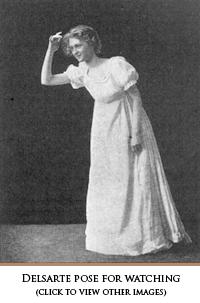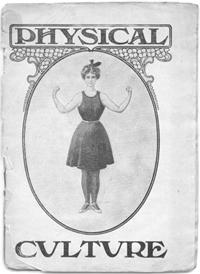 | |||||||||
| |||||||||
Physical culture also had its roots in a system devised by France's François Delsarte, who analyzed the gestures and expressions of the body. From this, he formulated a system that involved educating each part of the body to be fully expressive. A “scenic display of Delsarte movements” was presented on November 9, 1898 by a group from St. Andrew's Church during their monthly entertainment. It was “the star event of the evening,” according to the Province, with the “untiring zeal and efforts” of the instructor, Mr. Scarliff, earning praise. A great part of the appeal of physical culture was the spiritual and moral component. This is described in an advertisement found in the World, part of a series for a tonic called Paine's “celery compound”. The ad on October 7, 1893 is in the style of an article, and features Miss Mabel Jenness, whose healthy, active life is used to lend credence to her endorsement of the tonic. Jenness, “celebrated for her crusade for physical culture among the gentler sex,” is reported as believing that “the soul expresses itself through the body, and action goes on between the two, with the result that physical grace has a moral value.” Physical culture was closely related to expressive techniques such as elocution and oratory, and to the living statues (called tableaux vivants, and often based on classical Greek sculpture) that were a popular pastime for women. An April 1894 announcement in the World informed readers that Effie Elaine Hext, “elocutionist and statuesque poser in Greek costume”, was booked by E.G.M. Shipman of Toronto to appear in July (followed in September by “Miss E. Pauline Johnson, the Indian poetess”). Tableaux vivants, or “living pictures”, were another popular movement of the time. A seemingly indispensable part of an evening's entertainment, they often involved scenes of an uplifting nature. The Dramatic Hall in the Abbott Block opened on April 10, 1894 with a musical and theatrical entertainment under the auspices of the Ladies Aid of the First Congregational Church, which put on a tableau in two acts called Disturbed Bliss. A month later, a musical and literary entertainment at a hall on Richards Street run by the Y.M.I. (Young Men's Institute) included a tableau called The Three Graces, presumably based on Botticelli's painting, Primavera. During the evening, Father Eummelin played phonograph selections from his “splendid Edison instrument” (World, May 7, 1894), bringing the newest technology to the entertainment.
Following an opening piano overture by Miss Tierney, the playing of which did her credit, there was carried out the tableax [sic], The Annunciation, in which Mrs. Gagnon and Miss Morency took the parts so well that the audience insisted on the curtain being twice raised. Mrs. Gagnon and the Misses Morency, Walsh and Rose carried out the second tableaux [sic], The Nativity, and though the situation was a profound one, and the characters difficult, the respective parts were well performed. … The Seasons were portrayed in a tableau in which Mrs. Foley and the Misses Rose, Quann and Netterfield did themselves honor by their presentation with natural grace of the various periods. Pupils from the Sacred Heart Academy could also be found performing in tableaux vivants. The Academy's Sister Superior was praised for her efforts in 1898 when she mounted a presentation in June at Dunn Hall, a converted assembly hall. “The living flowers was a very pretty tableaux [sic], the centre pieces of the sunflowers being formed with living little faces.” In the opinion of the Province on June 9, 1898: “The public will be glad to hear from the pupils of the Sacred Heart Academy again with pleasure.” During the June Festival, there was a series of tableaux at Dunn Hall illustrating the society drawings of Charles Dana Gibson, described in the Province on June 21, 1898 as being “quite the piece de resistance ... The gowns and arrangement of colors and lights, not to mention the actual expression of the characters, were charming.” There were six presentations, beginning with one called That Delicious Moment - when you find that you are to take to dinner the girl who yesterday refused you. (next page)
©2006, Dance Collection Danse | ||



